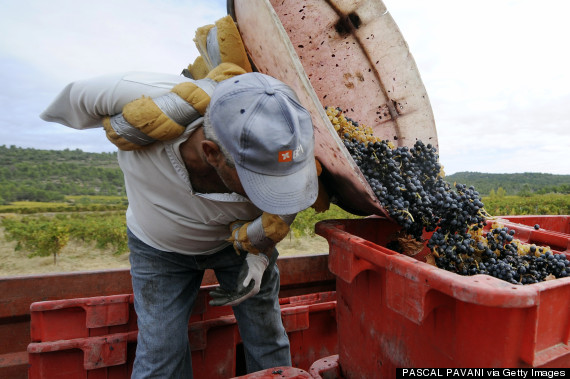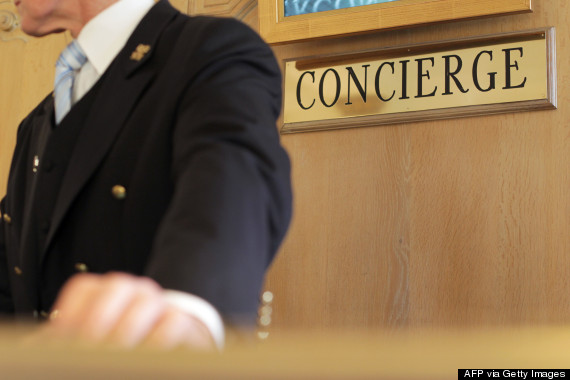
posted by Simon Kemp
As you probably know, Sir Terry Pratchett, beloved author of the Discworld novels, died on Thursday. In France — yes, he was beloved by the French as well — his death was reported by Libération as follows:
Peut-être la mort s’est-elle approchée et lui a dit «ENFIN, MONSIEUR TERRY, NOUS DEVONS CHEMINER ENSEMBLE». Car c’est ainsi, en lettres capitales, que parle la Mort, personnage récurrent de l’œuvre immense de Terry Pratchett, décédé aujourd’hui à l’âge de 66 ans.
Perhaps death approached and said to him, AT LAST, SIR TERRY, WE MUST WALK TOGETHER. That’s how Death speaks, in capital letters. Death is a recurring character in the immense series of novels written by Terry Pratchett, who died today at the age of sixty-six.
(The full article is here.)
In the comments below the online version of the article are the same expressions of sadness that have accompanied every mention of Pratchett’s death on this side of the Channel. But not all of them. The first comment is cross, as are one or two of the others. And they are cross about grammar.
Sérieusement Libé : peut-être également la mort s’est-IL approché de lui. Car pour Sir Pratchett la Mort est un mâle, un mal nécessaire.
And again:
Il fallait écrire : Peut-être la mort s’est-il approché et lui a dit «ENFIN, MONSIEUR TERRY, NOUS DEVONS CHEMINER ENSEMBLE»
What they are annoyed about is the use of the feminine pronoun, elle in the original article to refer to Death.
What’s going on? Well, la mort in French is a feminine noun, so the correct pronoun to refer to it should be elle, as in this line by the Romantic writer, Chateaubriand:
La mort est belle; elle est notre amie.
In Discworld, however, Death is most definitely male. He’s a guy with a skull face and a big scythe who rides around on a pale horse called Binky, ushering souls into the next life. Pratchett’s creation unintentionally trespasses on one of the most fraught areas of the French language: the question of what to do when the grammatical system of masculine and feminine nouns comes into conflict with the real-world existence of male and female people (as well as male and female animals, supernatural entities or symbolic personifications).
In all such cases, as Libé failed to realize, the pronoun is determined by the actual gender of the person, not by the grammatical gender of the noun.
So, for example, une star/une vedette (a movie star) and une sentinelle (a sentinel) are feminine nouns that can refer to men:
La sentinelle s’est assoupie. Il n’avait pas bien dormi la nuit précédente.
Gaspard Ulliel est une star francaise. Les anglais le connaissent surtout pour des publicités d’une marque d’après-rasage, dans lesquelles il dit: “I am nert going to be ze person I am expected to be any more.”
Feminine nouns that can apply to men are rare. (Apart from la personne, those are the only two I can think of right now.) Masculine nouns that can apply to women are far more common, and include many job titles and other roles in life, for instance:
un architecte – architect
un juge – judge
un médecin – doctor
un professeur – teacher
un témoin – witness
The same rule applies as above, so:
Mon professeur de français s’appelle Mme Vergnaud. Elle est très intelligente.
This rule, however, has turned into a feminist issue, with many women objecting to being referred to in the masculine, and with new feminine alternatives being coined, such as une avocate for a female lawyer, or une écrivaine for a woman writer. Sometimes it’s simply the article that’s at issue, as with the ongoing debate as to whether it’s acceptable to continue to refer to women government ministers as madame le ministre, or if madame la ministre is more appropriate. Here is a nice video of a male politician calling his female colleagues ‘madame le ministre’, and ‘madame le président‘ to their evident displeasure, and getting very much owned in response when they refer to him as ‘monsieur la députée’:
“Monsieur la députée”, “Madame le président” by LeHuffPost
Libération, at least, managed to sort itself out, when, a little later the same day, they published a proper article on Pratchett. Not only do they get Death’s gender right, they also add a little explanation as to who he is and what he does:
A la toute fin, la Mort, avec sa faux et son long manteau noir, vient tous nous chercher. Il (car, il a beau s’appeler «La Mort», c’est un homme, si vous ne le saviez pas) ne voulait pas forcément que tout cela soit terminé. Il n’y a pas d’intérêt particulier, c’est simplement son travail. Jeudi, Il est venu chercher, peut-être à regret, l’un de ses plus grands amis : Terry Pratchett.
At the very end, Death, with his scythe and his long black cloak, comes for us all. He (for, even if he’s called ‘La Mort’, he’s a man, in case you didn’t know), didn’t necessarily want it all to end. He doesn’t have any particular axe to grind, it’s just his job. On Thursday, he came, perhaps unwillingly, for one of his greatest friends: Terry Pratchett.
P.S. Before I saw the Pratchett grammar nerds, I was planning to use this post to urge you to go and see Suite française, a rare chance to see some French literature on the big screen (albeit an English-language Hollywood adaptation of some French literature, but we take what we can get). I was also going to tell you the story of how Suite française came to be published, which is if anything a more extraordinary story than Suite française itself. I’ll save it for the DVD, but in the meantime, here’s the trailer:
P.P.S. That first comment from the grammar nerd I quoted, the one that began, Sérieusement Libé, also contained an untranslatable pun, which the commenter no doubt thought was very clever. Did you spot it?





























